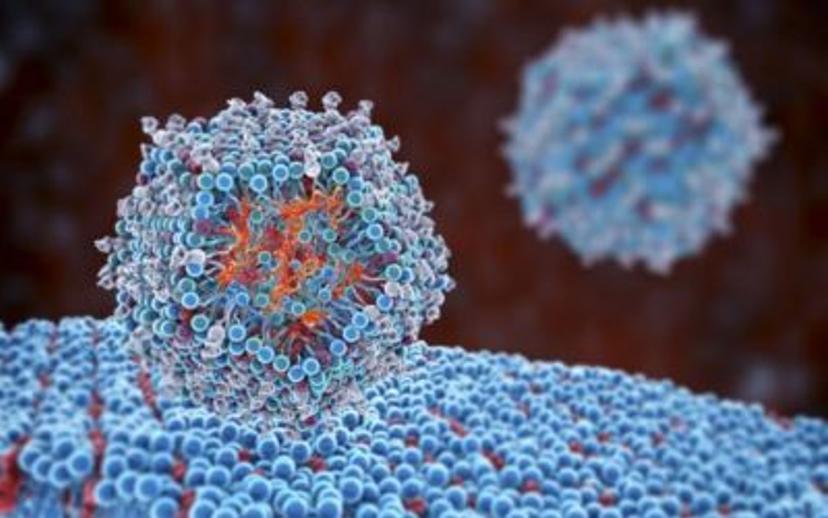Innovation helps unlock success of gene therapy delivery
How the latest analytical innovations help navigate gene therapy delivery challenges
7 Mar 2024

Gene therapy holds immense promise in revolutionizing the treatment of diseases including several types of cancer, viral diseases, and genetic disorders. However, the successful application of gene therapy relies heavily on efficient and targeted delivery mechanisms. Overcoming current gene therapy delivery challenges is crucial to unlocking its full potential and bringing about transformative advancements in medicine. Lipid nanoparticles and innovations with viral vectors form part of the answer.
One of the primary challenges in gene therapy lies in delivering therapeutic genes to target cells with precision. For target cells to manufacture the protein products of the introduced gene, the exogenous genetic material must be delivered to the cell's nucleus. This process of transfection typically uses two classes of vectors: viral and non-viral. An ideal vector should deliver genes to a specific cell type, accommodate foreign genes of sufficient size, achieve the level and duration of trans-genic expression sufficient to correct the defect and be non-immunogenic.
Viral vectors are often associated with increased technical demands and an increased risk of virus-associated toxicity. However, viral vectors have been engineered for safety by making them replication incompetent. Gene transfer via viral vectors is often more efficient and specific and whilst multiple and repeated doses are often required with non-viral delivery a single dose is often sufficient using viral vectors.
Non-viral delivery systems generally include either chemical methods, such as cationic liposomes and polymers, or physical methods, such as electroporation. This system is less efficient compared to viral systems in gene transduction, but their cost-effectiveness, availability, and reduced induction of the immune system compared with viral systems have made them popular targets for gene delivery.
Viral vector innovations
Adeno-associated virus (AAV) is one of the most actively investigated gene therapy delivery vehicles. Different serotypes of AAV can be used to specifically target certain tissues and organs and are the subject of intensive research to improve their properties.

Transient transfection is a common method for producing AAV vectors but this method has its challenges. There are existing supply chain hurdles in procuring GMP-grade plasmid DNA for industrial-scale production. Moreover, the addition of the plasmid DNA within the bioreactor itself is not a process that lends itself to consistency, accuracy, or speed. This results in immense batch-to-batch variability in terms of the end product. The inherent variability in the transient transfection process may be worsened further as transfection reagents tend to vary in quality, leading to small errors that compound over time. These challenges are widely acknowledged in the industry today, and as a result, the transfection process is not used for industrial-scale production outside of AAV development. Consequently, boosting the productivity of viral vector manufacturing remains the focus of many viral vector manufacturers. To overcome these challenges, companies such as Cytiva have developed innovative platforms such as the ELEVECTA™ stable producer cell lines for AAV production.
With a stable producer cell line, the yield and volume capabilities in AAV manufacturing are comparable to that of other recombinant protein production. Furthermore, using stable producer cell lines eliminates a critical and challenging piece of raw material – the plasmid DNA – from the manufacturing process. This results in a more robust and consistent vector production process.
Analytical tools to meet regulatory needs
Some of the additional challenges in manufacturing AAV therapeutics concern chemistry, manufacturing, and control (CMC). Gene therapy drugs often target rare diseases with trials involving only 10–20 participants, and yet organizations must conduct all the CMC operations normally required for product commercialization in much larger manufacturing batches.
Support of bioprocess development relies on the availability of fit-for-purpose analytical tools to assess potential critical quality attributes (CQAs) that are relevant to characterization and lot release testing. In the case of AAV-based therapeutics, this includes the ability to determine the concentrations of viral genomes (genome titer) and viral particles (capsid titer).
Technologies such as immunoassays developed on the Gyrolab platform from Gyros Protein Technologies are helping to meet the challenge of efficiency in the regulated AAV vector space. These immunoassays use AAV serotype-specific antibodies that can reliably measure AAV capsid titer in purified and in-process samples, delivering accurate and precise data suitable for AAV process development.
Lipid nanoparticles as an alternative

Owing to the tremendous success of lipid nanoparticle (LNP)-mRNA-based vaccines in preventing COVID-19-related diseases, it is not surprising that the excitement around LNP formulation has been reignited.
The development and use of non-viral LNPs, instead of viral-vector delivery systems for gene therapy, emerges from the fact that LNPs offer different properties than viral-vectors. LNPs can effectively encapsulate mRNA and ensure their efficient targeted delivery, controlled release, and enhanced cellular uptake. LNP formulations are biocompatible materials, which can be optimized in function for the type of target and RNA through the development and use of cationic or ionizable lipids in association with others, such as phospholipids, cholesterol, or polyethylene glycol (PEG)-functionalized lipids (PEG-lipids).
Despite the popularity and promise of using lipid nanoparticles for drug delivery, developing LNP-formulated gene therapeutics does not come without its challenges and complexities. LNP-formulated gene therapeutics represent a brand-new modality, and both the industry and regulatory agents have limited experience in their production and regulation. Many of the analytical tools and methods developed and validated for small molecule and protein therapies do not apply to the larger, heterogenous LNP-based therapeutics.
The main challenges are finding the correct LNP formulation for its intended purpose and demonstrating performance consistency with a relatively clean safety profile. To achieve this, the correct analytical methods need to be employed. The use of advanced methods such as SEC/FFF-MALS, that can analyze LNP multi-attributes in a single run under mild and non-invasive conditions, will be crucial to developing new LNP-based therapies. This technology can be used to characterize particle size, payload, and encapsulation efficiency, which are critical to product quality and efficacy.
Collaboration and innovation
While gene therapy holds immense promise in transforming medical treatments, overcoming challenges in its delivery mechanisms is crucial for its full potential to be realized. Novel analytical techniques that offer a comprehensive characterization of viral and non-viral vectors and their payloads are continuing to evolve and find exciting new applications within the field of gene therapy development. As the industry addresses the complexities of gene therapy, collaborative efforts, and innovative solutions will pave the way for a future where gene therapy can be delivered effectively, unlocking its transformative potential in medicine.

